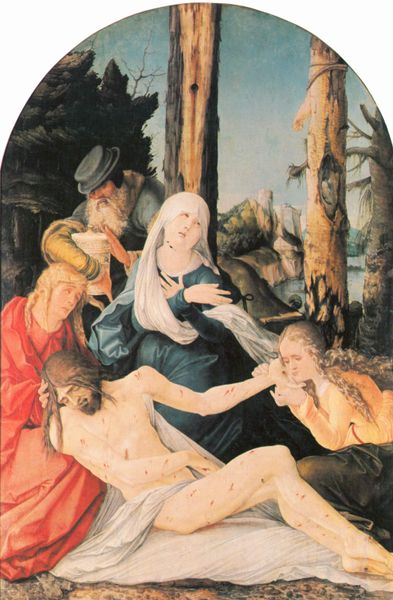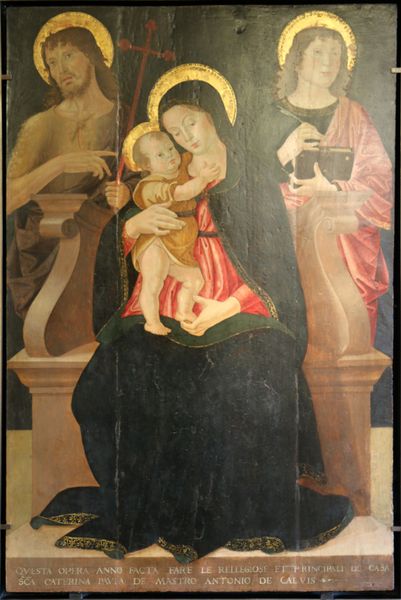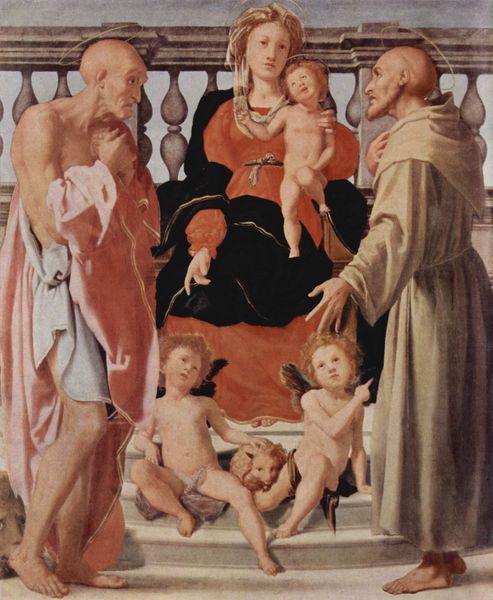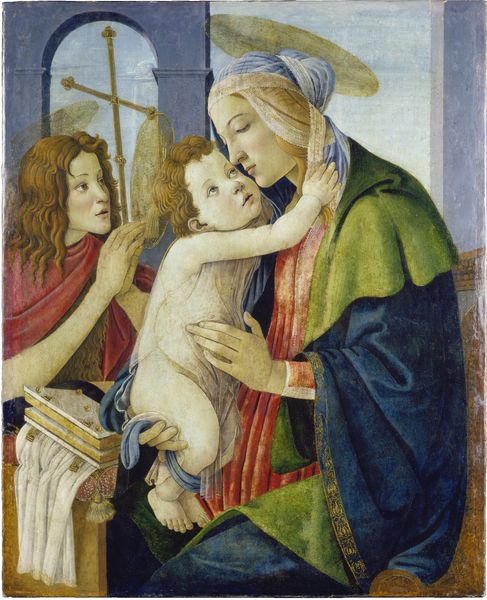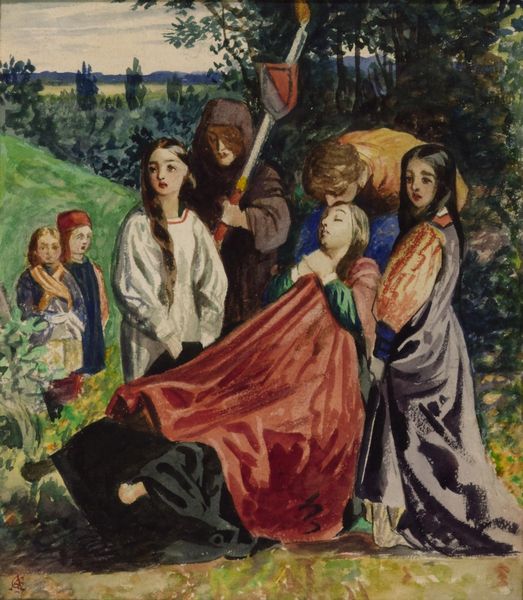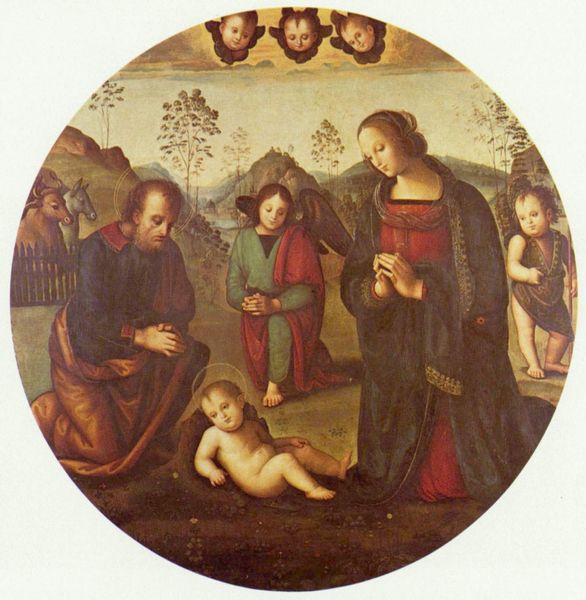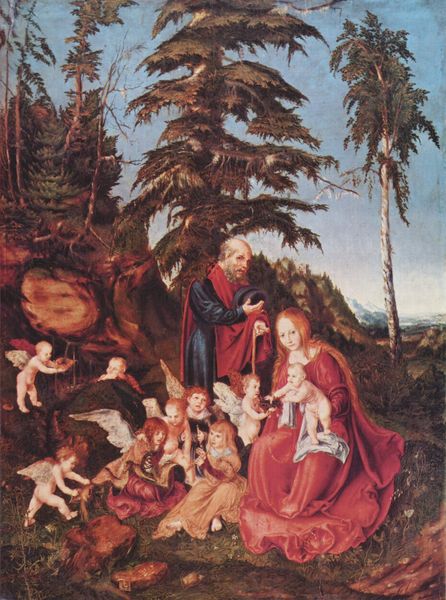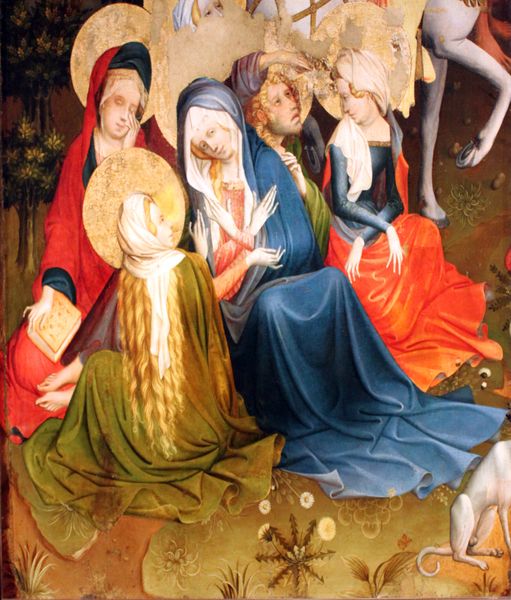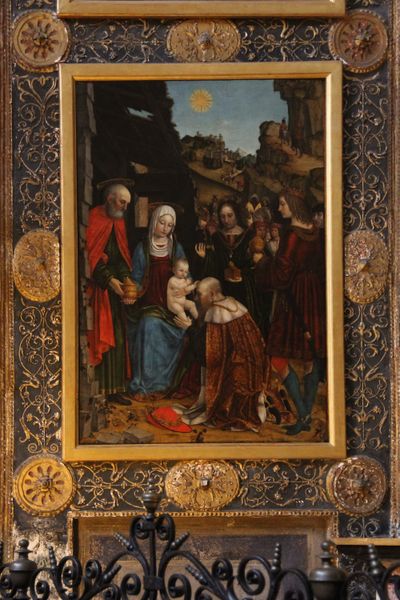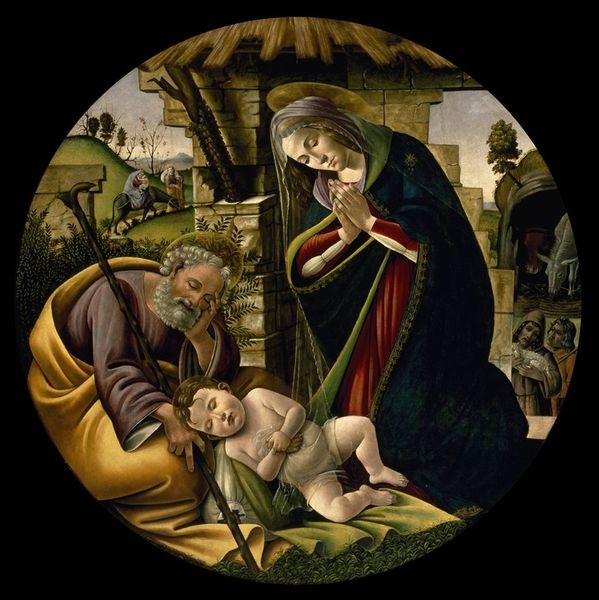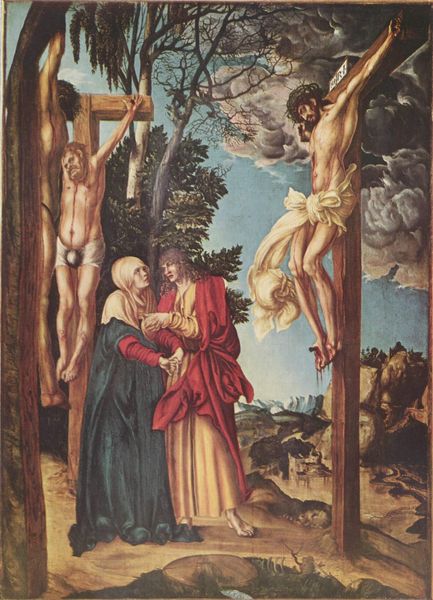
painting, oil-paint
#
painting
#
oil-paint
#
landscape
#
oil painting
#
italian-renaissance
Copyright: Public domain
Curator: Here we have Filippino Lippi's "Madonna and Child with Saints", an oil painting dating back to around 1485, a fascinating example of the Italian Renaissance style. Editor: Right, I see it. And I'm immediately struck by the mood – it’s rather contemplative, almost solemn, but in a quiet, peaceful way. Like a sacred, private moment captured within this golden landscape. Curator: I’m drawn to the details of production here; note the choice of oil paints. They were increasingly favored during the Renaissance for their ability to create rich, luminous colors and allow for smoother blending. Lippi leverages this to craft depth, observe, particularly in the figures' drapery and the natural environment. Editor: Absolutely. And I love how the landscape isn’t just a backdrop; it feels like an active participant in the scene. The rugged rocks, the distant figures… there's a narrative embedded in the materials themselves, as if the very earth is bearing witness to this sacred moment. It brings to mind questions of class and labor—how accessible would the paints have been, the training involved… Curator: That is an astute observation, thinking about access, the commodification of materials, is a very valid line of thought, but this brings up another thing in the foreground, notice the symmetry in the composition. Lippi uses the figures of the kneeling saints, juxtaposed on either side, with Virgin Mary holding the child, as the painting’s centralizing focus. Editor: Right! It's almost theatrical, but in a balanced way. The material choices almost feel spiritual: the heavy blacks of the Saint on the right contrasted by the muted browns and whites of the other, with Mary sitting central clad in dark, thick colors. She grounds it. What gets you, materialist mind? Curator: What strikes me, I guess, is how painting served as both a religious act but also, was, always a commissioned profession; from grinding the pigment to selling it in marketplaces, to creating the art pieces in work spaces: they were both studios and production sites. Editor: It reminds us that even the most divine depictions are, at their core, products of human labor, tools, skill, intention and creativity, you know? It almost grounds you, I'm really left pondering what goes into these works, what sort of life they inhabit within all that craftwork.
Comments
No comments
Be the first to comment and join the conversation on the ultimate creative platform.
